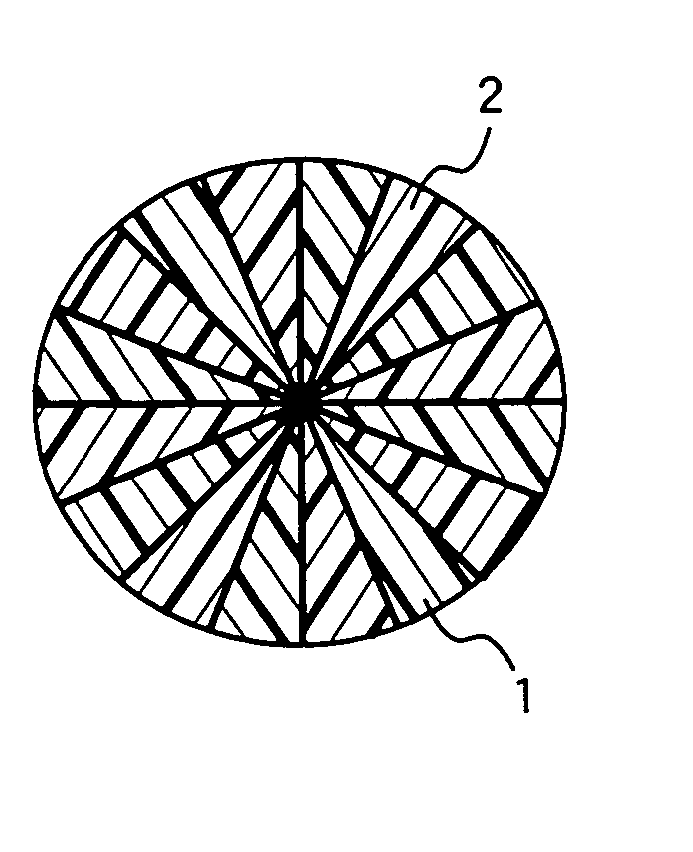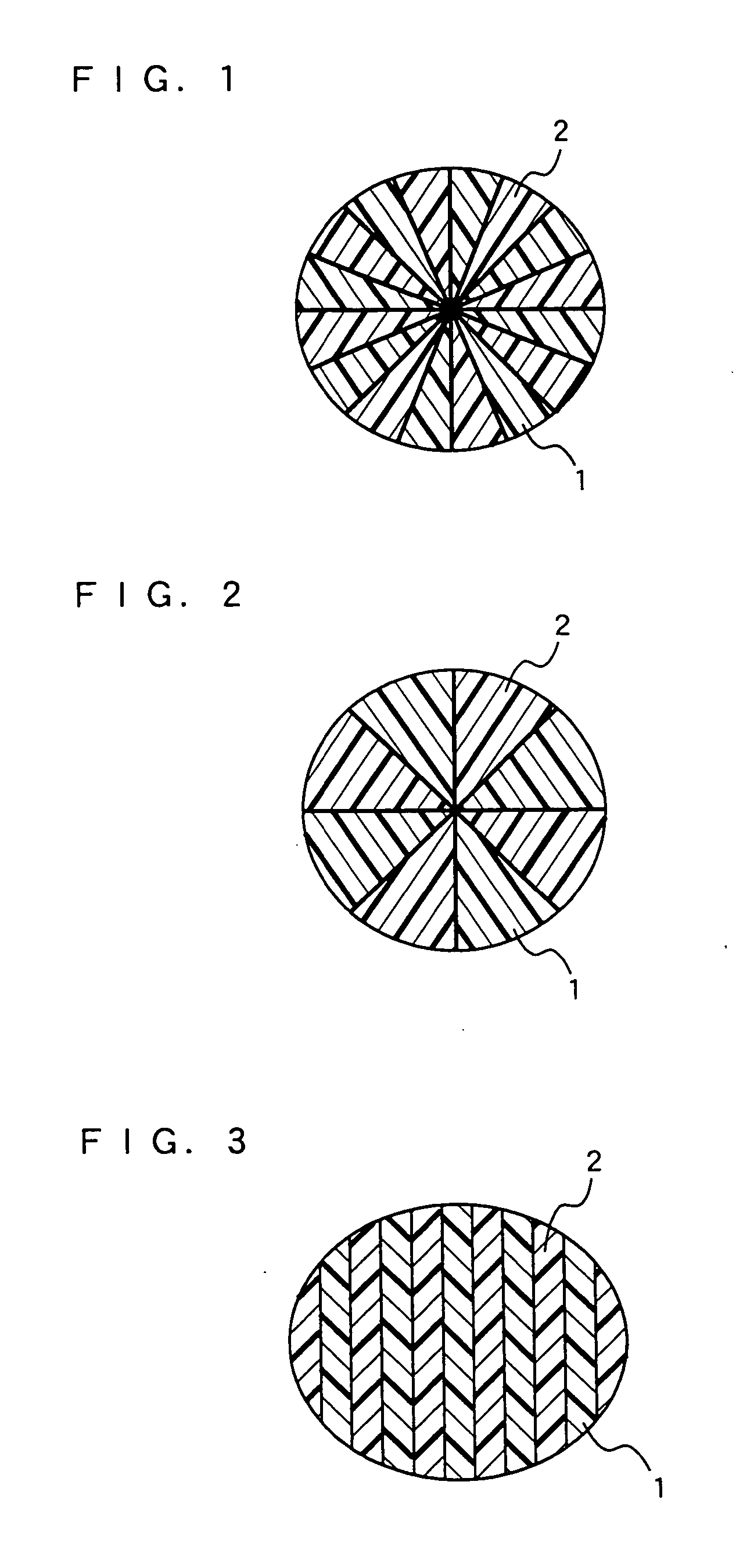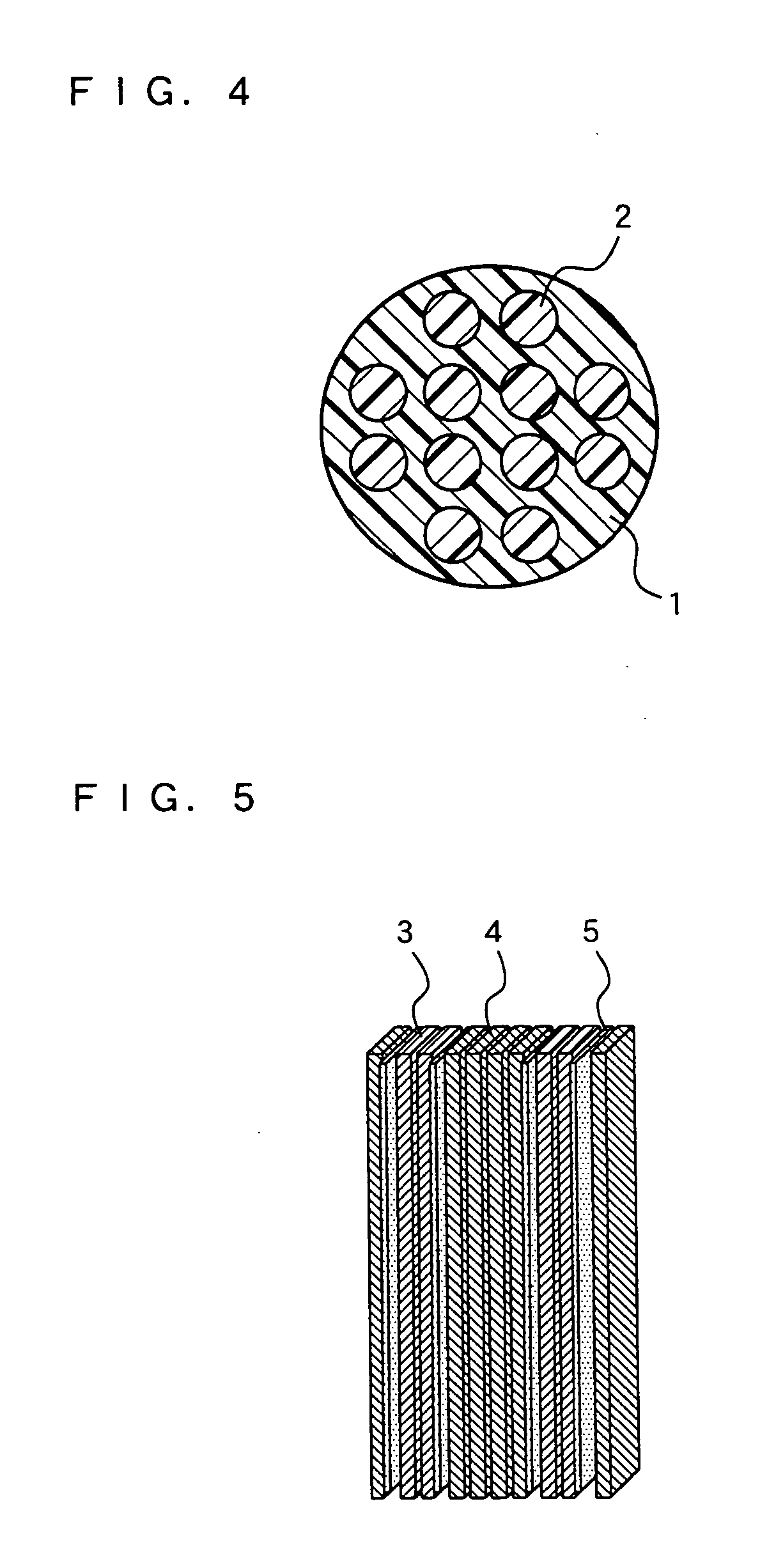Nonwoven fabric composed of ultra-fine continuous fibers, and production process and application thereof
a technology of continuous fibers and nonwoven fabrics, applied in the direction of weaving, cell components, cell component details, etc., can solve the problems of small surface area, low mechanical strength of meltblown nonwoven fabrics, short liquid absorption, flexibility and filtration properties, etc., and achieve high mechanical strength, excellent water absorption, and high flexibility or softness
- Summary
- Abstract
- Description
- Claims
- Application Information
AI Technical Summary
Benefits of technology
Problems solved by technology
Method used
Image
Examples
example 1
[Production of Ethylene-Modified PVA]
To a 100 L vessel for pressure reaction, equipped with a stirrer, a nitrogen-introducing port, an ethylene-introducing port and an initiator-adding port, 29.0 kg of vinyl acetate and 31.0 kg of methanol were fed. The mixture was heated to 60° C., and then the atmosphere of the reaction system was replaced with nitrogen gas by bubbling for 30 minutes. Then, ethylene was fed into the reaction vessel so that the pressure of the reaction vessel become 5.6 kg / cm2 (5.5×105 Pa). AMV (2,2′-azobis(4 -methoxy-2,4-dimethylvaleronitrile)) was dissolved as an initiator in methanol to prepare an initiator solution having a concentration of 2.8 g / L, and the atmosphere of the system was replaced with nitrogen gas by bubbling. The inner temperature of the reaction vessel was adjusted to 60° C., and then 170 ml of the initiator solution was poured into the reaction vessel to start the polymerization reaction. During the polymerization, the reaction vessel was ma...
examples 2 to 8
A nonwoven web composed of a conjugate continuous fiber was obtained under the same conditions as Example 1 except for using a PVA described in Table 1 instead of the PVA used in Example 1. The spinning state is shown in Tables 2 to 4.
Regarding the obtained nonwoven fabric composed of conjugate continuous fibers, the PVA component was extracted using a circular dyeing machine as with Example 1, and hot-air dried at 80° C. for 3 minutes to give an objective nonwoven fabric composed of ultra-fine continuous fibers. Also in each nonwoven fabric, the nonwoven fabric was composed of a bundle of the eight ultra-fine fibers.
In the obtained nonwoven fabric composed of ultra-fine continuous fibers, the evaluation results of the amount of the remaining PVA, the coverage of the PVA, the moisture percentage, the fineness, the fabric weight and various basic physical properties were described in Tables 5 to 7. Further, the evaluation results of the wiper performance and filter performance i...
examples 9 to 18
A nonwoven web composed of a conjugate continuous fiber was obtained under the same conditions as Example 1 except for using a PVA described in Table 1 instead of the PVA used in Example 1, using a spinneret having a cross section shown in Tables 2 to 4 and a thermoplastic polymer shown in Tables 2 to 4, and suitably adjusting a distance from the nozzle to the ejector and a line net rate, by adopting a spinning condition described in Tables 2 to 4. Then, the web was partially thermocompressed at an embossing temperature described in Tables 2 to 4 to give a nonwoven fabric composed of conjugate continuous fibers.
The weight ratio of polymers in the conjugate fiber was adjusted by varying an introduction amount of the polymer into the pack. Moreover, FIGS. 2 to 4 show cross-sectional forms of the conjugate fibers, other than the above-mentioned orange cross-section (1). FIG. 2 shows other orange cross-section, and the cross section of the fiber has an 8-divided cross-sectional form ...
PUM
| Property | Measurement | Unit |
|---|---|---|
| Temperature | aaaaa | aaaaa |
| Temperature | aaaaa | aaaaa |
| Temperature | aaaaa | aaaaa |
Abstract
Description
Claims
Application Information
 Login to View More
Login to View More - R&D
- Intellectual Property
- Life Sciences
- Materials
- Tech Scout
- Unparalleled Data Quality
- Higher Quality Content
- 60% Fewer Hallucinations
Browse by: Latest US Patents, China's latest patents, Technical Efficacy Thesaurus, Application Domain, Technology Topic, Popular Technical Reports.
© 2025 PatSnap. All rights reserved.Legal|Privacy policy|Modern Slavery Act Transparency Statement|Sitemap|About US| Contact US: help@patsnap.com



